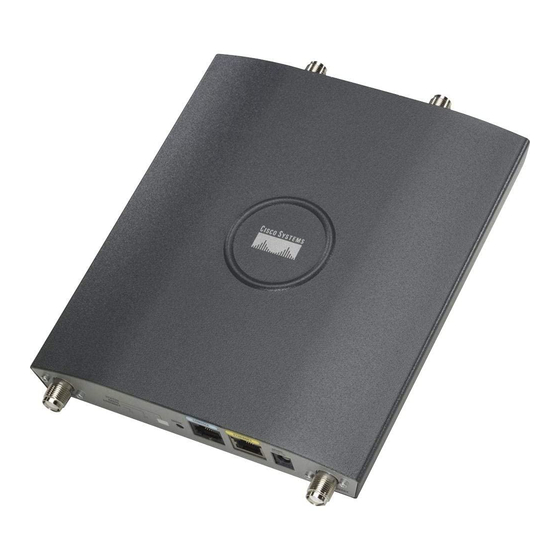Cisco AIR-LAP1242AG-C-K9 Ficha de datos - Página 3
Navegue en línea o descargue pdf Ficha de datos para Punto de acceso inalámbrico Cisco AIR-LAP1242AG-C-K9. Cisco AIR-LAP1242AG-C-K9 10 páginas. 802.11a/b/g access point

All contents are Copyright © 1992–2006 Cisco Systems, Inc. All rights reserved. This document is Cisco Public Information.
Access points may be placed above ceilings or suspended ceilings, allowing antennas to be
discreetly placed below drop ceilings. The UL 2043 rating of the Cisco Aironet 1240AG Series
allows the access points to be placed above ceilings in plenum areas regulated by municipal fire
codes. Public access applications such as large hotel buildings may also present a challenging RF
environment; the antenna versatility of the Cisco Aironet 1240AG Series, together with industry-
leading range and coverage, provides reliable performance for the most demanding environments.
Features and Benefits
Table 1 lists the features and benefits of Cisco Aironet 1240AG Series Access Points.
Table 1.
Features and Benefits of Cisco Aironet 1240AG Series Access Points
Feature
Dual 802.11a and 802.11g
Radios
Dual RP-TNC Antenna
Connectors for Both 2.4-GHz
and 5-GHz Radios
Link-Role Flexibility
Cisco Unified IDS/IPS
Management Frame
Protection
Security
Currently Supports 12 Non-
Overlapping Channels, with
Potentially up to
23 Channels
Rugged Metal Housing
UL 2043 Plenum Rating and
Extended Operating
Benefit
Provides up to 108 Mbps of capacity in a single device for industry-leading capacity
and compatibility with older 802.11b clients.
Antenna connectors support a variety of Cisco 2.4-GHz and 5-GHz antennas, providing
range and coverage versatility.
Autonomous access points can function as an access point or bridge, whether set up
as a single-band or dual-band platform, allowing each radio to be individually
configured as an access point repeater, root bridge, non-root bridge, or workgroup
bridge, enabling a broad array of applications.
This integrated software feature is part of the Cisco Self-Defending Network and is the
industry's first integrated wired and wireless security solution. When a trusted client
acts maliciously, the wired IDS detects the attack and sends shun requests to Cisco
WLAN controllers, which will then disassociate the client device.
This feature provides for the authentication of 802.11 management frames by the
wireless network infrastructure. This allows the network to detect spoofed frames from
access points or malicious users impersonating infrastructure access points. If an
access point detects a malicious attack, an incident will be generated by the access
points and reports will be gathered on the Cisco wireless LAN controller, Cisco WCS,
or CiscoWorks WLSE.
Authentication
Security Standards
WPA
WPA2 (802.11i)
Cisco TKIP
Cisco message integrity check (MIC)
IEEE 802.11 WEP keys of 40 bits and 128 bits
802.1X EAP types:
EAP-Flexible Authentication via Secure Tunneling (EAP-FAST)
Protected EAP-Generic Token Card (PEAP-GTC)
PEAP-Microsoft Challenge Authentication Protocol Version 2 (PEAP-MSCHAP)
EAP-Transport Layer Security (EAP-TLS)
EAP-Tunneled TLS (EAP-TTLS)
EAP-Subscriber Identity Module (EAP-SIM)
Cisco LEAP
Encryption:
AES-CCMP encryption (WPA2)
TKIP (WPA)
Cisco TKIP
WPA TKIP
IEEE 802.11 WEP keys of 40 bits and 128 bits
Lower potential interference with neighboring access points simplifies deployment.
Fewer transmission errors deliver greater throughput.
Metal case and rugged features support deployment in factories, warehouses, the
outdoors (NEMA enclosure required), and other industrial environments.
Supports installation in environmental airspaces such as areas above suspended
ceilings.
Data Sheet
Page 3 of 9
